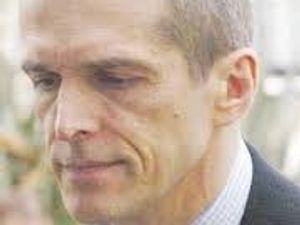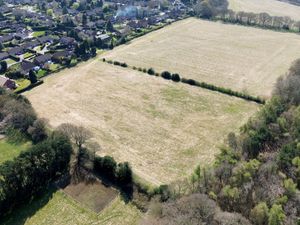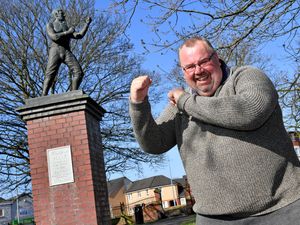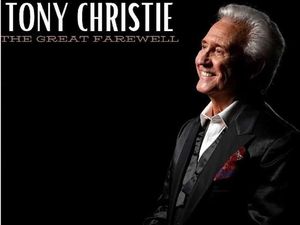Havin' a loff – the perils of working with children, animals, and male strippers
It was a job Graham Gough hadn't particularly been looking forward to begin with.
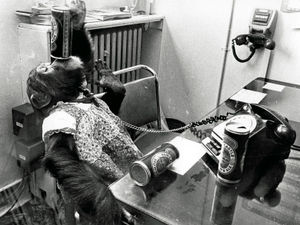
Back in 1970, Lew Foley, the self-styled Lion Man of Cradley Heath, was living with his wife, three children – and a lion called Laddo. And it was Graham's job to capture on camera this somewhat unusual domestic arrangement.
As he apprehensively went into the house, Lew held Laddo on the end of a chain, and sat on the stairs. Graham stood a few yards away, the other side of the doorway. And as he went to take the picture, the lion tugged on the chain as he lunged towards him.
"I took the picture and shut the door as quick as I could. I think it must have been lunchtime!" says the former Express & Star man, who lives in Kinver.
But while it may have made Graham's heart pound a bit faster than he would have liked, it made for a fantastic photo, and one which takes pride of place in the former Express & Star man's latest book.
In a career spanning the best part of seven decades, Graham has seen it all, and his latest book Have a Loff captures the funny side of life beyond a lens.
And while the old adage goes that one should never work with children or animals, the book proves that people who follow that advice are missing out on a great deal of fun.
"Children love to do funny things, and are less self-conscious than adults in set-up situations," he says.
"But animals can upstage every time, as the chimp in the gents proves."
The chimp in the gents was one of two pictures he took of Koko, one of Dudley Zoo's resident chimpanzees, who was always a natural in front of the camera. Graham recalls how he used to love mimicking the behaviour of his keeper, so when his keeper went for a point-to-point at the urinal, it was only natural that Koko would want to ape his actions.
"The thing that made it such a good picture was that he turned to look at his keeper at just the right moment," says Graham.
On another occasion, Koko paid a visit to the Plaza cinema, next to the zoo, as part of a publicity stunt for a film it was showing at the time.
At the end of the shot, the manager invited Graham and the keeper into his office for refreshments. Not wanting to feel left out, Koko made himself comfortable around the table and helped himself to a can of brown ale.
"There were a few dregs in the bottom of the can, he seemed to like the taste of it, and helped himself to another," says Graham.
Called to take a picture of a school band in Upper Gornal, Graham decided to recreate the local legend of a pig being placed on a wall to watch the band go by. He lined up four youngsters with their instruments in front of a wall, and to complete the picture he got two men to lift a pig onto the top of the wall.
It made for a great picture, but it was less fun for the men holding the pig: "It peed all over them," he recalls.
When Graham went to Blue Coat School in Dudley to take a picture of a pupil who had landed a spot on television talent show New Faces, he had no idea of the significance his picture would take – and neither did the boy in the photo for that matter.
Sixteen-year-old Lenny Henry had long had his classmates in stitches with his impressions of his teachers, but his appearance on the ATV show would mark the start of a career that made him one of the most recognisable faces on television.
Graham recalls young Lenny being good fun and more than happy to play to the camera, clearly enjoying the limelight.
"I think he was making the most of it," he says. "I didn't think he had a clue at the time, you certainly never have thought he would go on to become a 'sir', and become a straight actor."
While working with children and animals carries certain risks, it is nothing to the dangers of working with male strippers and their excited female fans, as Graham found discovered when he went to a hen-night at the Saltwells Inn at Quarry Bank, near Dudley, in 1975.
Back then, Andy Wade was one of the first male strippers in the Black Country, and he had a large and somewhat vociferous following. When Graham went along to see the man in action, he remembers quite a nerve-wracking experience.
"It was quite hairy," he says. "Apart from Andy, I was the only man in there. I was in a room full of women, and they were all going berserk."
The resulting picture won the News Picture of the Year award, and was the basis of artist Beryl Cook's famous painting Ladies' Night.
Graham also remembers their being plenty of laughs when he photographed our future King, the then Prince Charles, during a visit to Dudley market place in 1996.
"He was good fun, chatting and joking with real people," he says.
"They were crowded right round him. He had a copper with him, but I was surprised how close you were able to get to him. I had to crawl underneath the stalls to get a picture of him from the other side, which was a bit difficult with all the camera gear, but I was the only photographer who go that picture."
Another amusing shot of royalty came in 1985, when the Duchess of Kent visited an old people's home in Dudley – and was late arriving.
"One of the old ladies gave her a stern telling off, she told her she had been kept waiting," he remembers.
At an event to commemorate the 40th anniversary of D-Day in 1984, Graham travelled to Normandy, where the Allied heads of state turned out to watch a march-past on Omaha beach. US President Ronald Reagan, standing just a few feet from the Queen, became distracted, when he spotted a familiar face in the crowd – making for an amusing picture.
Graham, now 83, began his career at the former Dudley Herald in as a 15-year-old trainee in 1954, taking pictures on a glass-plate camera. Early jobs included royal visits by the Queen and Princess Margaret, the funeral of Black Country football legend Duncan Edwards in 1958, and the infamous Dudley race riots of 1962.
In 1966 he moved to Devon to become the Daily Mirror's photographer in the south-west, before joining the Express & Star in the early 1970s, where he remained until 2000.

